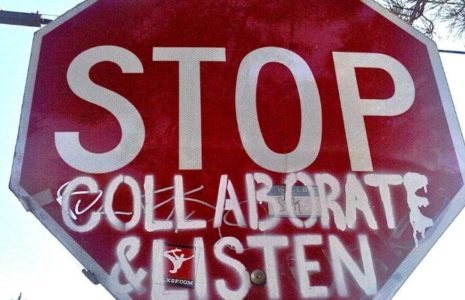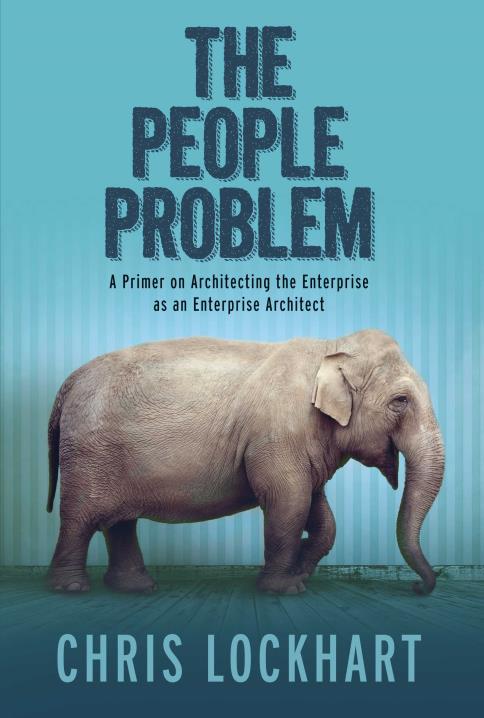Does that even exist?
It sounds like it gets the consultantese seal of approval, but putting ‘social’ and ‘enterprise architecture’ together is more than just an extract from a slide deck somewhere. The reality of social media’s impact on the world and on business surrounds us every day.
Positive stories about companies that have successfully harnessed social tools to advance their business or improve their brand are countered by the increasing number of horror stories of brandjacking or lousy customer service gone viral. The importance of social tools, social marketing and branding and socially interactive CRM cannot be overstated. What’s more, the incredible potential value to corporations in terms of knowledge management, office virtualization and organic competency growth dictates that social media and its associated tooling be incorporated into the way we do things in American business.
Social media is…
There seems to be an informal debate still raging across the interwebs and twitblogs about what social media actually is. The folks with marketing/web design/branding backgrounds naturally see this tidal wave as a means to promote and manage business and brands. They see the world through the eye of the customer and how that customer interacts with his universe. Invariably this leads to the business vs customer storyline and can be seen at work in company efforts around Yelp, Twitter, Facebook, etc. This is what I call a ‘conceptually social’ view of things. It is big picture. It is the liberal arts view. It is the view that encompasses feelings and communication and other humanly squishy things. It is the view that builds practices, standards and methods around customer relationship management and ‘outward’ business activity (or even B2B or B2E). It is about creating and managing and leveraging perception.
There is another side to the social web, however. This side of the world is seen through the lens of the technical folks. These are the people with computer science, engineering, networking or development backgrounds. They are predisposed to see the world in terms of technology, tools and tasks and how those interact with other. This world is about processes and events and execution. For these people, social media is too vague a term. It has to be distilled into deployable, executable software components. For them, social media is embodied by tools and services. It is a decidedly practical and physical set of technologies that is installed someplace and used to manage workflows, whether they are human to human or human to system or human to… I don’t know, AI. This is the view I refer to as the ‘logically social’ view of the world. It is the engineering view. It is the view that represents how human components within an enterprise system interact with each other and with the systems they operate. It is all about creating situations favorable to repeatability, ranking, reuse and the operational practices to standardize it all. It is about creating and managing and leveraging predictability.
The reality is that any aspect of social media can be viewed through both lenses. Social media is about both perception and predictability. It is an approach and it is a tool. The question for business today is how and when and where and why social media should be used. Business can only answer this question if it understands how to include ‘social’ in an overall enterprise view.
Socially Serviced
As architects we have a bit of a leg up in this area. For us the enterprise is comprised of multiple, interconnected yet discrete, logically distinguishable components. The enterprise is an organism composed of individual elements that, when combined, represent greater capability than the sum of the parts. Just as a liver is useless without a brain and a circulatory system, a rules engine is unusable without business rules and a services infrastructure (despite what Tibco or Pega may say – sorry guys).
As architects, we are able to find the right spot for the right technologies and (ideally) proffer solutions to business problems. From this perspective, ‘social’ becomes yet another component in the arsenal. But what does it actually mean?
If we see the enterprise as components, it follows that we can introduce components to the model without breaking it. After all, the components don’t actually have to be connected to anything to be present in the model. They’re just…present. In fact, if we alter the view a bit, we can visualize the enterprise as discrete technical capabilities that represent major buckets of functionality. None of them actually have to be connected to each other. They sit there, floating in the enterprise ether. We have liver, brain, circulatory system (or rules engine, rules repository, service bus). We’re not describing how they are used together simply that they exist as things, or services, we in IT can provide either individually or as part of some composite that we construct to solve a particular problem.
Through this lens, social is a service.
It is one of many services. It may in fact be part of many other services as well as a discrete capability. Think of knowledge management, for example. Envision your average corporate learning and knowledge program. It has training, webcasts, maybe a SharePoint site etc. Here is a technical service that represents a composite of many sub components: document management, workflow, portal, service bus, data mart, rules engine, collaborative tools…dare I say social tools. All of these things comprise the IT service called knowledge management. It can be packaged into a solution offered to the business in the context of specific problems. At the same time, the fact that collaborative/social tools like Jive or SharePoint or whatever are part of the knowledge management service, that doesn’t preclude them from being offered as a discrete capability. The ‘solution’ may simply be a social tool implemented for a specific business unit.
Socially Enterprised
Notice how as an architect I don’t much care whether social media is an approach or a tool. Whether it is outward or inward facing. Whether it is something you do or something you install. At the end of the day it doesn’t matter to me all that much. At the end of the day, social is a service that embodies business and technical elements and can be included in a solution for either realm. It is both a way of doing things as well as a tool for doing it. Social becomes a component in my enterprise view of the business. When I begin to see social as both a method and a tool, it becomes easier to envision how and when and where and why my business should use it.
As it turns out, it is fairly easy to represent Social as another element of my enterprise architecture. In a conceptual view or a business architecture, it is a functional area or domain that represents a set of methods and practices and roles and actions. In a logical view or a technical architecture, it is a bucket of technical functionality like BPM or Portal or Content Management. I’m also toying with the idea that in a technical architecture, perhaps Social is a zone or layer unto itself. Time will tell, but Social may be an additional zone in the traditional 5-zone model of the technical reference model. Then again, it may not.
As with any component in an enterprise architecture, Social has people, process and technology associated with it. It has interconnections with other business functional areas (such as marketing or communications) as well as relationships with enterprise technologies (such as portals, CRM or knowledge management). It has actions and roles that define how it is to be operated and by whom. It has standards and practices that dictate when and why it is to be leveraged. It should have a strategy associated with it. Could you imagine having ‘portal’ in your enterprise architecture and not having it associated with a portal or IT strategy? (A bit rhetorical since I can imagine it as well as point to many companies without it).
The Social Principle
The principles of describing Social as a capability, of identifying it in the enterprise as a service to be leveraged, of recognizing it as a component that can be included in a composite or offered discretely is critical to successfully deriving real enterprise value from social media and web 2.0, 3.0, whatever it is now. The key is understanding it as something you do and the things you do it with. It is one more mechanism for IT to solve business problems and one more way for the business to interact with its customers. It could be argued that today it is the most important mechanism and the most important way.
So go ahead. Take your business domain model or technical reference model and get about trying to decipher where the Social Service makes sense. Figuring out how it fits into the enterprise is the first step to leveraging it. I guarantee you’ll be the only one in your operation doing this. Imagine if you provide the company with the way to marry social media and enterprise architecture. Won’t you be the rock star?


